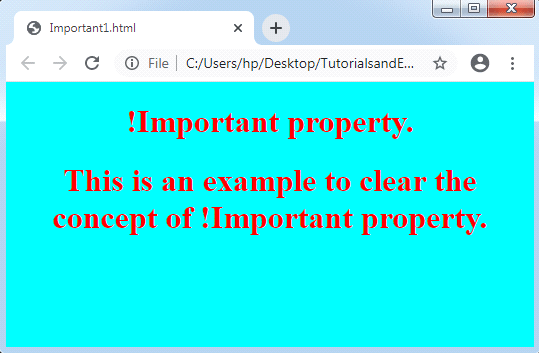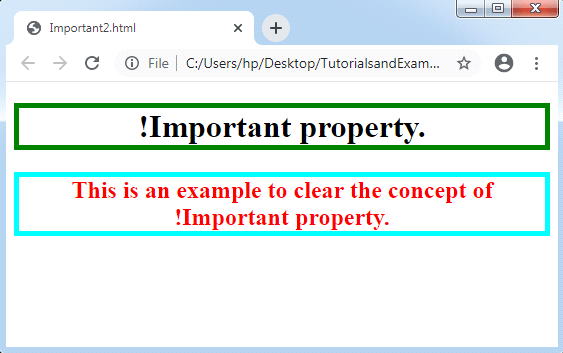CSS Important
CSS Important: CSS !important property is used to provide more importance, as compared to other CSS properties. The meaning of this property is “This is important.” This property enables CSS to have a cascade feature. When we use this property in the text, the text’s priority will be higher than other priorities.
It is recommended that we should not apply this property to our codes until the program is necessary. It often happens because of the high usage of the !important property can result in several unexpected behaviors.
When we define a rule with this property, it will neglect the regular concern, where later established rule overrides any rule which was described previously. If we apply on or more !important marked declaration, the regular cascade holds it up again. It means the newly marked !important declaration will take the place of the previous one.
It enhances the CSS property priority and avoids all the overriding properties.
Syntax:
element {
font-size: 14px !important;
color: red !important;
....
}
Example:
<!DOCTYPE html>
<html>
<head>
<style>
h1 {
color: white;
}
h1 {
color: red !important;
}
body {
background-color: cyan !important;
text-align: center;
background-color: red;
}
</style>
</head>
<body>
<h1>!Important property.</h1>
<h1>This is an example to clear the concept of !Important property.</h1>
<p></p>
</body>
</html>
In the above code, the body’s background color is cyan rather than red. It is because we apply the cyan background color before the !important.
Output:

Let’s look at another example to clearly understand this property.
Example:
<!DOCTYPE html>
<html>
<head>
<meta name="viewport" content="width=device-width, initial-scale=1">
<style>
body {
text-align: center;
}
h1 {
border-color: green !important;
border: 5px red solid;
border-color: violet;
}
h2 {
color: red !important;
color: cyan;
border-color: aqua !important;
border: 5px yellow solid;
}
</style>
</head>
<body>
<h1>!Important property.</h1>
<h2>This is an example to clear the concept of !Important property.</h2>
</body>
</html>
In the code mentioned above, we used the !important property on the text border. The border color of heading h1 will be green against other declarations. The border color of heading h2 will be aqua and red against other statements.
Output:
